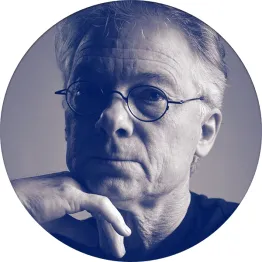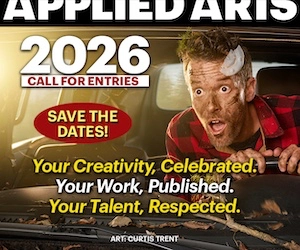I’m Craig Frazier, designer and illustrator. My dad was in the Air force so I grew up in several locations including Germany, Texas, New Mexico, and California. He was an engineer and a general problem-solver so I suppose I got a little of his DNA.
I have been a drawer all my life and graduated from Chico State University, CA with a degree in Graphic Design. I was exposed to a rich and emerging graphic design scene in the San Francisco Bay area at that time (early 80’s) and was inspired and encouraged by professors and other designers like David Lance Goines. I wanted to be an illustrator but was persuaded to become a designer. I took my first and only job in Palo Alto where I received exemplary mentoring and training—enough to open my own studio in 1981. I ran my own firm doing all manners of design and advertising for clients in the arts, technology and furniture.
In 1996, I closed my firm to pursue a second career in illustration. I would never have attempted that move without my experience as a designer and business owner. My design training has informed every bit of my illustration practice.
What are you working on at the moment?
I’m working on a variety of projects, as I always am. I have a regular flow of editorial jobs, a couple larger corporate assignments, finishing a wine branding project, just finished 2 children’s books (out in 2019), working on a trademark and branding project, pitching 3 new books and developing a line of framed prints. I’m doing a series of personal pen and ink drawings. I’m doing a few speaking engagements as well. I just finished a small newspaper with articles that I have written and illustrated.
What does a typical working day look like?
There isn’t a typical day. Some days I work several hours on drawings. But others I write proposals, do billing or mundane paperwork. Others I’m working on projects that keep me visible. My website, personal projects, kids books, newspapers!
What tools do you use most for your work?
I use basic analog tools. I have old circle templates, triangles and tissue paper. I’m a serial user of Micro .01 pens and Moleskines. I also have a roll of amberlith that I cut my illustrations out of. See my video - [link]
I’ve been doing a series of ink drawings using Irishizuku inks. I’ve new at watercolor but find these inks incredible vivid and easy to use. Of course, I use a Mac and finish all of my illustrations on the computer. I love my iPhone camera and take lots of pictures.
What skills have you learnt along the way?
I’ve learned a lot of skills but the most valuable is the fundamental skill of evaluating a problem. Because I’m a designer at heart, everything I do and everything I draw is working toward a solution to a communication problem. All of the technical skills I’ve learned are under the discipline of craftsmanship and design. I continue to learn to draw better simply by practice and repetition—but I’m also learning to see better. How to see simpler solutions, better abstraction, more unique representations of things. I’m so encouraged because I still see breakthroughs in my own methods at this late stage in my career. I see the fruits of years of practice and returning to approaches that I have trusted.
What advice would you give to a young creative?
Do work that you want to do and the clients will find you. Don’t work for low fees under the premise that the exposure will be good for you. This notion is the great boondoggle and dismantling of the creative industry. You have to strive to find your won unique voice and at the point that you find it you can begin to command your career in terms of money, clients and experience. Be vigorous and be patient and work very hard at enjoying every day at the drawing board. Heed the signals when it ceases to be fun.
Do work that leaves room for the reader. Whether illustration or design, work that is overstated serves no one. Exercise restraint and stand up to your clients to defend it. Work with ambiguity, wit and wonderment is work that is remembered.
Sketch all of the time—whether for assignments or practice. It will never fail you.



